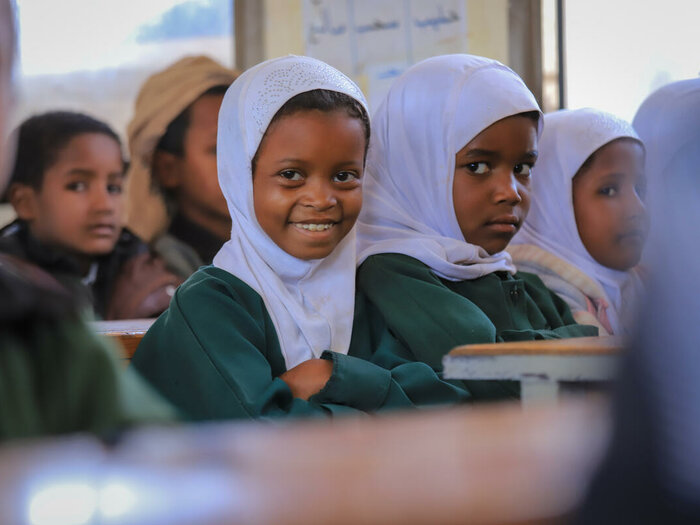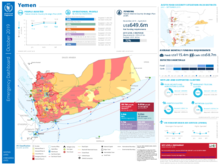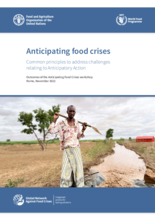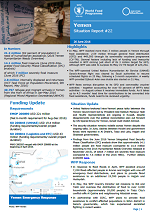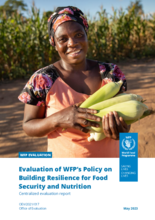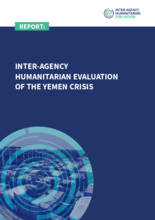Yemen
- 21.6 million
- people in need of humanitarian assistance in 2023
- 17 million
- people are food insecure
- 4.5 million
- people are internally displaced
Even before fighting broke out in early 2015, Yemen was one of the poorest countries in the Arab world. With an average life expectancy below 64, the nation is ranked 183th out of 191 in the 2021 Human Development Index.
Seven years of conflict have left thousands of civilians dead and 4.5 million people internally displaced. Its impact on the country’s infrastructure has been devastating, with major overland routes and airports severely damaged.
Despite ongoing humanitarian assistance, 17 million Yemenis are food insecure.
What the World Food Programme is doing in Yemen
-
Food assistance
-
In 2023, WFP aims to provide 15 million people with food assistance as in-kind rations of flour, pulses, oil, sugar, salt, or voucher or cash to purchase the same quantity of food.
-
Cash assistance
-
Through this system, people receive cash equal to the value of the food basket provided to families, which will inject much-needed liquidity into the economy. Much higher food prices in the south versus the north of Yemen means the cash amount is different.
-
Nutrition assistance
-
In response to high acute, moderate and severe malnutrition rates among children, WFP aims to provide nutritional support to 4.3 million pregnant/nursing women and children under 5 in 2023.
-
Livelihoods support
-
WFP is also focused on helping Yemen build a sustainable future through livelihoods support. In 2023, WFP aims to reach 2 million people with projects to rebuild productive assets like roads, agricultural land, irrigation systems, schools and health facilities as well as training.
-
School feeding
-
WFP aims to provide daily nutritious snacks – either date bars or high energy biscuits – to 3.2 million school children in 2023. The programme focuses on areas that have been hard hit by conflict, leading to low levels of school attendance and poor food security.
-
Logistics
-
The WFP-managed UN Humanitarian Air Service (UNHAS) continues to transport humanitarian aid workers between five key hubs in Yemen and the region. In addition, the Logistics Cluster facilitates regular sea and air transport for humanitarian cargo between Aden, Hodeidah, Sana’a and Djibouti.
Yemen news releases
Go to pagePartners and donors
Achieving Zero Hunger is the work of many. Our work in Yemen is made possible by the support and collaboration of our partners and donors, including:
Australia
Austria
Belgium
Bulgaria
Canada
View all
Find out more about the state of food security in Yemen
Visit the food security analysis pageContacts
Office
Diplomatic Area, Nowakshot Street, House No. 22 P.O. Box 7181 Sana'a - Republic of Yemen
Sana'a
Yemen
Phone
+967 1 214 100
Fax
+967 1 205 515

